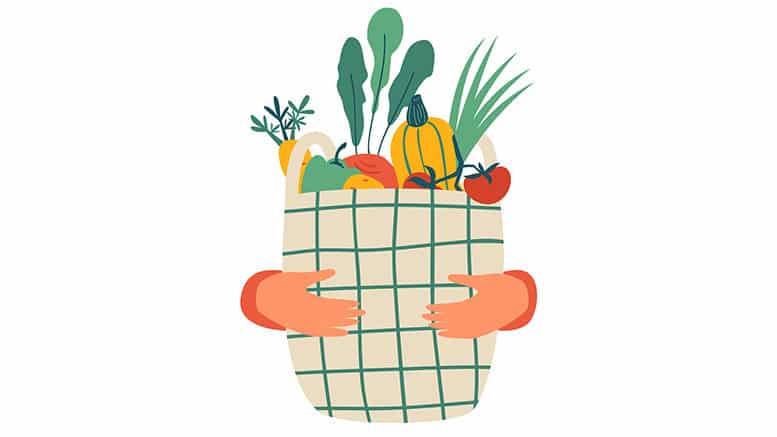The White House last week hosted a national conference on hunger, nutrition and health to accompany the release of a new national strategy to combat food insecurity, improve food quality and strengthen nutrition-related health outcomes. The conference and national strategy were the first of their kind in more than 50 years.

The Biden administration released a comprehensive food security and nutrition health agenda, described as a “whole-of-government and whole-of-America approach” to ending hunger and increasing healthy eating by 2030. The strategy includes key priorities around improving food access and affordability, better integrating nutrition and healthcare, empowering customers to select healthy choices, supporting increased physical activity, and enhancing nutrition and food research.
While the agenda is incredibly broad, several of the outlined priorities are important for community colleges and our students.
Expanding federal benefits
The administration’s plan signaled strong support for working with Congress to expand Supplemental Nutritional Assistance Program (SNAP) benefits to more college students, noting that “SNAP’s college student eligibility restrictions are out of date given the current population who seek higher education credentials, many of whom are older, have low income, and hold caregiving responsibilities.”
Currently, statutory work requirements limit SNAP access for many college students. Most students enrolled more than part-time are ineligible for SNAP benefits unless they meet an exemption. Those requirements were eased as part of the Coronavirus Response and Relief Supplemental Appropriations Act, which allowed thousands of college students to purchase food through the benefit if they participated in Federal Work Study (FWS) or had an Expected Family Contribution (EFC) of zero. The administration wants to work with Congress to make the expanded eligibility permanent.
Congressional Democrats have also authored a proposal to expand SNAP eligibility for college students. The Student Food Security Act would automatically expand eligibility to students who are eligible for FWS, have a zero EFC, receive a maximum Pell Grant or meet the financial eligibility criteria to receive a maximum Pell Grant, or are independent students in an otherwise eligible household. This legislation is expected to be reintroduced in the next Congress and could receive additional attention when the Covid emergency declaration expires, ending the current, more expansive coverage.
The administration is also calling on Congress to revisit current limitations on online shopping and purchasing certain prepared foods under the Women, Infants and Children (WIC) program and SNAP. Rethinking purchase limitations for WIC and SNAP benefits could increase uptake and access for community college students, who may face more significant time barriers to shopping at grocery stores and preparing meals at home.
The national strategy also includes a plan to align eligibility and access to federal assistance programs, with a specific item encouraging the U.S. Education Department (ED) to work with the Department of Agriculture (USDA) to increase outreach and awareness of SNAP benefits for eligible college students. The strategy notes that USDA and ED will establish a memorandum of understanding to conduct joint outreach to Pell Grant recipients to inform them of their potential SNAP eligibility. The plan also calls for a similar partnership between USDA and the U.S. Department of Labor to increase SNAP enrollment through referrals at American Job Centers, some of which are located at/partner with community colleges.
Finally, President Biden indicated additional priorities that are important for community college students with parenting and work responsibilities. The strategy signaled strong support for making permanent the expanded Child Tax Credit and the expanded Earned Income Tax Credit, expanding the free school lunch program, and making permanent and expanding the Summer Pandemic Electronic Benefits Transfer program, which provides nutrition assistance for children from low-income households during the summer months.
Additional priorities
The national strategy also puts forth a plan to strengthen and diversify the nutrition workforce. The strategy includes an item to encourage the U.S. Department of Health and Human Services’ Health Resources and Services Administration to partner with minority-serving institutions to recruit and train nutrition professionals from underrepresented groups.
Finally, the strategy aims to increase access to healthy foods. As part of the plan, ED will send a Dear Colleague Letter to encourage colleges and universities to be mindful of healthy food options at campus dining centers, use American Rescue Plan funds to increase the availability of healthy foods at campus food pantries, and work with community organizations to promote healthy eating among college students.
Looking forward
While some of the priorities outlined in the national strategy can be accomplished through administrative action, many others will require Congressional approval, state buy-in and concerted efforts from local, community and philanthropic partners.
The American Association of Community Colleges will continue to monitor relevant food security, food quality and nutrition workforce development proposals, including as part of any reauthorization proposals for the Higher Education Act, the Workforce Innovation and Opportunity Act and the Farm Bill.





